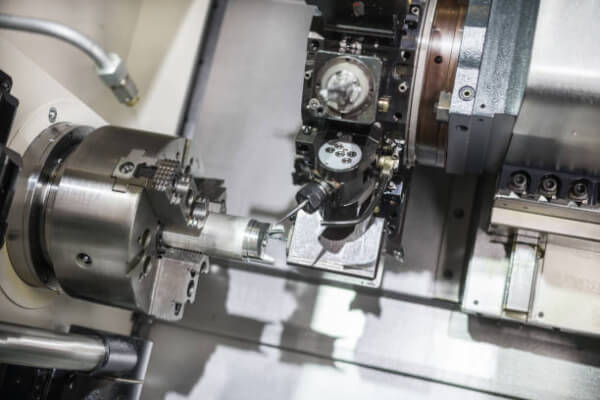
5-axis CNC machines can produce complex components and surface details in a single setup, enabling the production of complex parts. However, milling intricate 5-axis part geometries often requires small cutting tools. These require high speeds to achieve optimum speeds and feeds. Unfortunately, most 5-axis CNC machines are not equipped with high-speed spindles.
Fortunately, there are ways around this. Five-axis technology combined with high-speed air spindles offers a number of benefits, including increased accuracy, fast production rates, improved surface finishes and enhanced drilling techniques.
Compared to standard CNC spindle speeds of 8,000 or 16,000 rpm, milling at speeds of 25,000 to 90,000 rpm can reduce cycle times by 6 to 10 times. Faster cycle times mean faster production rates, lower cost per part and improved profitability. Of course, increased throughput also increases machine uptime, allowing the shop to take on more work.
When milling challenging geometries which cannot be machined on conventional 3-axis CNC machines, cutting tools need to be able to reach into deep holes and approach from difficult to access angles to meet part specifications. Larger spindles can limit tool access, but deep holes and difficult angles are no problem with Air Turbine Spindles®. A variety of long body spindle options are available to meet your needs. These extended body spindles allow the cutting tool to machine inaccessible surfaces without the loss of stiffness of long tools that protrude from the collet.
Five-axis machines have two additional axes, in addition to the conventional three linear axes, which allow the tilting and rotation of cutting tools or parts. This enables complex, high quality parts to be machined. The high speed of the spindle allows the machine tool to produce a precise finish.
High speeds are essential when using small cutting tools for complex features and finishing operations. However, most CNCs lack the spindle speed to achieve the speeds and feeds recommended for micro endmills. Air Turbine Spindles® easily integrate into a five-axis machining centre, allowing operators the high speeds and feeds required to avoid tool breakage.
By performing both roughing and detail work on a single five-axis machine, parts can come off the machine in a single set-up, saving the user a great deal of costly labour.
Machinists may consider the use of a traditional spindle speed controller or electric spindle to increase the speed of their CNC machine spindle. These nominal high speed spindles are often unable to maintain high speeds for long periods of time. They heat up, resulting in limited duty cycle, burn-out and negative thermal effects. Similarly, coolant spindles often have insufficient power to maintain high speeds in the cut and are ineffective except for tiny micro-tools in a light pass.
A key difference between patented Air Turbine Spindles® and speeders or electric spindles is that there are no gears, high frequency brushes or vanes to thermally expand or burn out. Air Turbine Spindles and Tools® avoid these problems because their technology has only two moving parts: their proprietary controlled turbines and air-cooled, grease-packed ceramic bearings.
This direct drive eliminates heat and duty cycle while increasing durability. The key difference is that the patented governor control increases the airflow CFM to match the cutting tool load and maintain high speed in the cut. RPM does not drop significantly across the toolpath – and the same closed-loop control of the airflow keeps consumption to a minimum. This means these CNC spindles last longer and maintain consistent quality.
A significant advantage of five-axis machining is the ability to machine five faces of a part in a single setup, saving the operator’s time. Once programmed, the five-axis machine can perform all roughing operations with a low-speed spindle and introduce a high-speed air turbine spindle through the CNC tool changer to complete detailed and finishing operations in one setup.